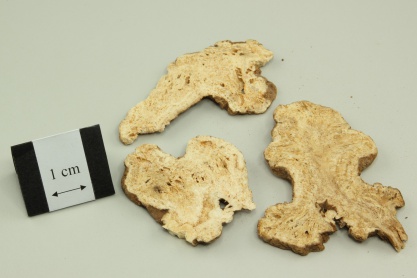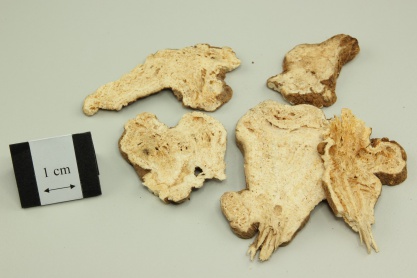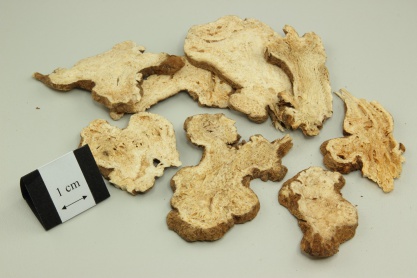白朮
- ENG
- Largehead Atractylodes Rhizome
- LATIN
- Atractylodis Macrocphalae Rhizoma
| Medicinal Group | Qi-tonifying medicinal |
|---|---|
| Source | Dried rhizome of Atractylodes macrocephala Koidz. (Fam. Compositae) |
| Nature and Flavors | sweet, bitter; warm |
| Meridian Affinity | Spleen, Stomach |
| Actions | To invigorate the function of the spleen and replenish qi, eliminate dampness by diursis, arrest excessive perspiration, and prevent mischarriage |
Family
Compositae
Part used
Root and Rhizome
Indications
Hypofunction of the spleen with loss of appetite, abdominal distension and diarrhea; dizziness and palpitation due to retention of phlegm and fluid; edema; spontaneous sweating; threatened abortion
Research Findings
- Xiaozhang Recipe (consisting of large head atractylodes rhizome) in combination of lamivudine could improve the liver function of chronic viral hepatitis B patients with compensated liver cirrhosis and hepatitis B virus deoxyribonucleic acid, lower their Chinese medicine symptom scores and chronic liver disease questionnaire scores, improve their Child-Pugh classification to some extent.[1]
Cautions
No Data.
Report on adverse effect
No Data.
Reference
Reference
- Zhou ZH, Li M, Huang LY. (2011). Study of xiaozhang recipe combined with lamivudine in treatment of 84 chronic viral hepatitis B patients with compensated liver cirrhosis. Zhongguo Zhong Xi Yi Jie He Za Zhi. , 31(9):1220-3.












